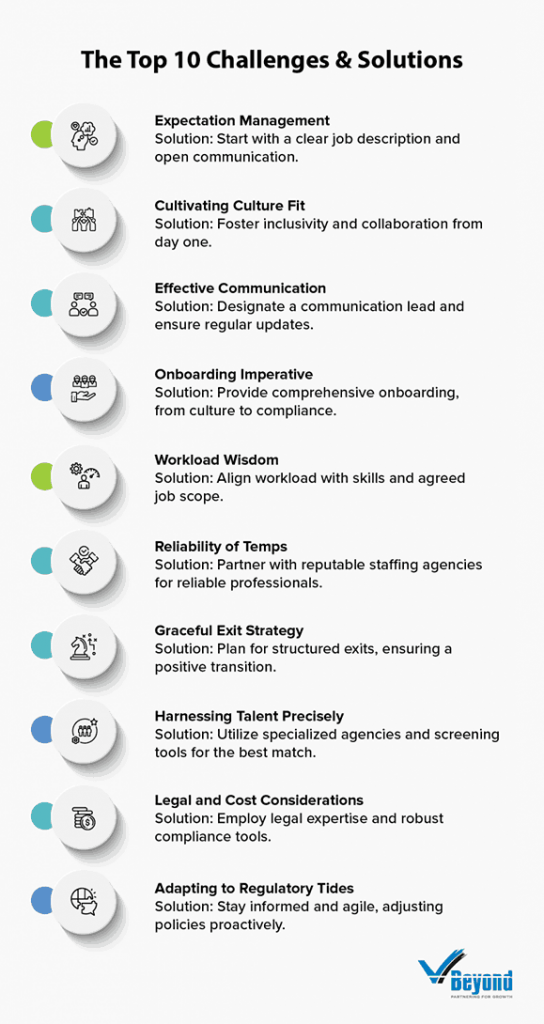The blog delves into the complexities of the modern workforce, highlighting the pivotal role of contract staffing in today’s dynamic job market. From navigating legal intricacies and ensuring culture fit to fostering career progression for temporary employees, this blog offers actionable strategies on contingent workforce for businesses, staffing agencies, and candidates alike. Armed with expert insights, readers will discover holistic solutions to thrive in the evolving landscape of contractual employment.
Introduction
The rapidly evolving job market has untethered the traditional bonds of employment. According to thought leader Josh Bersin, seismic shifts that have transformed how we work, hire, and pursue our careers. From the stability and predictability of the mid-20th century employment model to today’s Pixelated Workforce, the journey has been nothing short of revolutionary.
Workers are no longer tethered to a single employer for their entire careers but are instead navigating a mosaic of opportunities, powered by unprecedented access to information and flexibility. At the core of the transformation that has reshaped the employer-employee relationship is the rise of contingent workforce management pivoting on contract staffing. It has given birth to a new economic landscape driven by innovation, agility, and a relentless pursuit of skills and productivity.
As with any new era, the challenges faced by companies in contract staffing have become more pronounced and complex. Yet, within these challenges lies the opportunity to redefine success in the workforce.
This blog aims to explore the top 10 challenges in contract staffing faced by organizations, offering insights and strategies for effective contingent workforce management. We also touch upon a few additional contract staffing challenges for recruitment and staffing companies, and employees alike. Our objective is to see how we can overcome these hurdles, armed with the wisdom to harness the full potential of our diverse and dynamic business environment and employment landscape.
Addressing major contract staffing challenges: Key contingent workforce management solutions and strategic insights for organizations
The margin for error in contractual employment or temporary staffing decisions is razor-thin in the present-day dynamic labor and economic climate. Contingent workers include temporary contract workers, consultants, independent contractors or professionals, and freelancers. Together, they constitute nearly half (47.5%) of an organization’s workforce, as highlighted by research from Ardent Partners and Future of Work Exchange, making the operational significance of each extended worker hire as crucial as that of a permanent employee. The ramifications of a hiring mistake, whether for an extended or permanent role, are substantial, potentially costing businesses up to 30% of the employee’s first-year earnings, according to the US Department of Labor.
It is, therefore, imperative for organizations to diligently understand and address the challenges inherent in contingent workforce management from the contract staffing angle. Ignoring these challenges not only carries a high financial cost but also impacts organizational agility and competitive advantage. Leveraging the insights shared by seasoned providers of temporary staffing services, here is an exhaustive list of challenges and solutions:
- The art of expectation management
Navigating the challenge: The journey begins by setting the stage right. It’s all about clarity—ensuring everyone knows the what, when, and how. A temp’s role, workload, and timeline should be crystal clear from the get-go, laying a solid foundation for success.
Mastering the strategy: Kick things off with an explicit job description and a candid conversation about the role’s temporary nature. Your objective is to not just avoid future misunderstandings but to build a relationship based on transparency and trust.
- Cultivating culture fit
Navigating the challenge: Integrating temporary staff into an organization’s culture presents a unique set of challenges, not least of which is ensuring a seamless blend between permanent and temporary employees. Achieving organizational harmony is crucial for maintaining productivity and morale, and it requires a proactive approach to inclusivity and collaboration.
Even for short-term roles, a seamless blend into your company’s culture is paramount. A delicate balance, it is achievable, nonetheless.
Mastering the strategy: Make them feel at home right from the start of their tenure. How do you go about ensuring that they are fitting in fine, enriching the team’s dynamic?
By fostering a culture of inclusivity and collaboration. To ensure a cohesive team dynamic, organizations must take deliberate steps to prepare their permanent staff for the arrival and integration of temporary colleagues. This involves:
- Awareness and education: Educate your permanent team about the value temporary or contractual staff bring to the organization. Highlight the skills, fresh perspectives, and flexibility these individuals contribute. Workshops or informational sessions can be effective in dispelling myths and fostering a culture of acceptance and respect.
- Communication and expectation setting: Clear communication about the role of temporary staff, their contributions, and how they fit into the team’s goals is essential. Setting expectations for collaboration and teamwork helps in building a foundation for positive interactions from the start.
- Inclusive teambuilding: Incorporate team-building activities that include both permanent and temporary staff, facilitating interpersonal relationships and a sense of belonging. These activities can range from informal meet-and-greets to more structured team projects that require joint effort.
- Mentorship programs: Pairing contractual staff with long-term employees as mentors can bridge the gap between different groups. This not only aids in the onboarding process but also creates a supportive environment where knowledge and experiences are shared freely.
- Feedback mechanisms: Implementing regular feedback sessions where both temporary and permanent staff can voice concerns, share successes, and offer suggestions for improvement encourages open dialogue and mutual respect.
- Communication: The lifeline of temporary staffing
Navigating the challenge: Clear and constant communication is the lifeline of effective temporary staffing. It keeps everyone aligned and ensures temp staff feel valued and in the loop.
Mastering the strategy: Designate a go-to person for all things communication, and don’t pullback on the regular check-ins. Your aim is to not just update—you are looking at creating a two-way flow of feedback and inclusion.
- The onboarding imperative
Navigating the challenge: A common pitfall? Underestimating the power of proper onboarding and training for contract employees. This step is non-negotiable for setting up temps for success.
Mastering the strategy: Tailor your onboarding to equip temps with everything they need, from tools to company culture insights. This will ensure the temp is productive, engaged, and impactful. You could provide the following:
- A personalized welcome note
- Company swag (branded items like t-shirts, mugs, or notebooks)
- Essential documents (guides, policies, and necessary paperwork)
- Access to necessary software
- Hardware (laptops, headsets, or any other essential equipment)
- IT support introduction (how to get in touch with IT for any setup issues or questions)
- Role-specific training (overview of their duties, key tasks, and how their role fits into the team and company)
- Tool training (short tutorials on the tools and software they’ll be using)
- Compliance training (information on legal compliance, safety, and company policies)
- Company culture presentation (An overview of your company’s values, mission, and culture)
- Meet the team sessions (short, informal meetings with key team members they’ll be working with)
- Mentorship and support (such as buddy system; regular check-ins with a manager or mentor to discuss progress and address any concerns, and share feedback)
- Clarity on objectives and success metrics, including opportunities for extension or permanency
- Resource hubs, such as an online portal where temps can find all necessary resources, contacts, and training materials
- Social integration opportunities (such as team events, or subscription to company newsletter)
- Workload wisdom
Navigating the challenge: How do you manage workloads efficiently without tipping the scale on either side: permanent hires and contractual hires? Overburdening the contract employee is a surefire way to dampen productivity and morale.
Mastering the strategy: Keep the workload aligned with their skills and the agreed-upon job scope. You are looking to optimize productivity without skewing towards overloading, ensuring satisfaction on both sides.
- Reliability: Breaking stereotypes
Navigating the challenge: Shake off the ‘undependable temp’ stereotype. Many temps are skilled professionals seeking short-term opportunities, not just a stopgap.
Mastering the strategy: Partner with staffing agencies that understand the value of dependability, such as VBeyond Corporation. Thorough vetting brings you not just any contact employee but a dedicated professional.
- The graceful exit
Navigating the challenge: All assignments come to an end, but the departure of temporary staff should be as strategic as their onboarding.
Mastering the strategy: A structured exit, complete with a checklist or a clear end date, can turn a goodbye into a positive transition for everyone involved.
- Harnessing talent with precision
Navigating the challenge: Finding the right talent is akin to finding a needle in a haystack. Quality is more important than quantity—accuracy over volume.
Mastering the strategy: Leverage specialized staffing agencies, such as VBeyond Corporation, or sophisticated screening tools.
Specialized agencies will help you in the following ways:
- Access specialized talent: Quickly find skilled temps in niche areas
- Improve quality of hire: Use advanced screening for better matches
- Efficient onboarding: Leverage agency orientations for quicker contract staff integration
- Flexibility and risk mitigation: Scale workforce easily while managing legal risks
- Cost-effectiveness: Save on hiring and evaluate temps for potential permanent roles
- Enhanced support: Benefit from ongoing agency support for smoother experiences
Advanced screening tools will lead to:
- Better matching: Pinpoint ideal candidates faster
- Efficiency gains: Streamline the hiring process
- Reduced bias: Ensure fairer candidate evaluation
- Data-driven decisions: Leverage analytics for insights
- Continuous improvement: Refine hiring with feedback loops
- Legal and cost considerations: Navigating the maze
Navigating the challenge: The complexities of legal compliance and contract management can be daunting, not to mention the balancing act of cost control.
Mastering the strategy: Arm yourself with legal expertise and robust compliance tools. A proactive approach to cost analysis ensures financial efficiency without surprises.
- Adapting to regulatory tides
Navigating the challenge: The regulatory landscape is changing constantly, presenting a moving target for compliance and staffing strategies.
Mastering the strategy: Stay agile and informed. Adjusting policies proactively in response to regulatory shifts ensures your contact staffing strategy remains both effective and compliant.

Understanding the full spectrum: Embracing a multi-stakeholder perspective in temporary staffing solutions
Recognizing and tackling the challenges inherent in contract staffing demands a comprehensive, three-dimensional approach that considers three perspectives: the organizations’ that rely on this flexible workforce; of staffing agencies and recruiters; and of the employees or the candidates. True holistic solutions emerge only when we integrate the unique needs, expectations, and contributions of each stakeholder group.
Staffing agencies and recruiters play a pivotal role in bridging the gap between talented individuals seeking short-term opportunities and organizations in need of their specific skills. They must not only ensure a smooth matchmaking process but also anticipate and mitigate the potential hurdles that can arise from such arrangements.
Similarly, understanding the aspirations and concerns of temporary employees who aspire to navigate this dynamic landscape successfully is crucial. Acknowledging the challenges faced by these candidates is pivotal for creating an environment where contract staffing can truly flourish. These individuals seek opportunities that offer not just financial rewards but also professional growth, work-life balance, and a sense of belonging, even within temporary roles. By understanding and addressing the unique concerns and aspirations of these candidates, staffing agencies, and organizations can enhance their approach to recruitment, onboarding, and integration, ensuring a more seamless and mutually beneficial relationship.
Taking a multidimensional approach, thus, elevates the practice from a mere operational necessity to a strategic tool for fostering a dynamic, adaptable, and satisfied workforce. In recognizing and valuing the expectations and challenges of each stakeholder, we pave the way for innovative solutions that not only meet immediate staffing needs but also support the long-term success of both individuals and organizations.
Strategic responses to temporary staffing and recruitment challenges: Effective solutions for service providers
The key pivots are:
- Matching talent with client needs
Navigating the challenge: At the core of staffing and recruitment is the art and science of aligning the unique skills and aspirations of candidates with the specific needs and cultures of clients. Accuracy in matching is crucial for the success of both parties and the reputation of the service provider.
Mastering the strategy: Embrace artificial intelligence (AI) and machine learning to refine your talent matching process. Advanced AI algorithms can analyze vast datasets, identifying nuanced skill matches and compatibility with corporate cultures more effectively than traditional methods. Incorporating predictive analytics can also forecast future workforce trends, allowing for proactive talent sourcing and placement.
- Maintaining quality and reputation
Navigating the challenge: Staffing and recruitment is a competitive domain, where the quality of your placements is directly proportional to your reputation in the industry. High-quality, successful placements are the cornerstone of trust and reliability in the eyes of both clients and candidates.
Mastering the strategy: Implement a rigorous candidate vetting process that goes beyond the resume, leveraging behavioral analysis and competency-based assessments. Utilize feedback loops from both clients and candidates post-placement to continuously refine your vetting and placement processes. Commitment to excellence ensures that you consistently meet and exceed expectations, strengthening your reputation as a leader in the field.
(iii) Adapting to market trends
Navigating the challenge: The job market is in a constant state of flux, influenced by economic shifts, technological advancements, and changing workforce dynamics. Staying ahead requires a keen eye on market trends and an agile approach to recruitment strategies.
Mastering the strategy: Dedicate resources to ongoing market analysis, utilizing both AI-driven data analytics and human expertise to identify emerging trends and shifts in industry demands. This will facilitate rapid adaptation of services, such as providing project-based placements or specialized talent pools, alongside positioning you as a forward-thinking partner to clients working their way through these changes.
(iv) Pricing and value proposition
Navigating the challenge: Crafting a pricing strategy that reflects the value you provide, while remaining competitive, is a delicate balancing act.
Mastering the strategy: Differentiate your services by incorporating value-added offerings such as candidate training and upskilling programs, career coaching, and access to industry insights. These initiatives not only enhance your value proposition but also contribute to the professional development of your candidates, making your services more attractive to high-caliber talent and discerning clients. Transparent pricing models that clearly communicate the benefits and outcomes of your services further strengthen trust and loyalty among your clientele.
Contingent workforce challenges and solutions: Insights for candidates
The key pivots are:
- Steering through contractual employment
Navigating the challenge: Stepping into the world of contractual employment, deciphering the maze of rights, responsibilities, and legal jargon can be daunting. Complexity can obscure the understanding of one’s own position and rights within the contractual framework.
Mastering the strategy: Empowerment through education becomes key. Leveraging online platforms and resources that offer clear, accessible information about contractual employment laws and rights is essential. Furthermore, seeking tailored legal advice or consulting services that specialize in employment law can provide clarity and assurance. Platforms and professional networks dedicated to freelancers and contract workers often host webinars, workshops, and forums that demystify contractual terms and legal protections, fostering a more informed contractor community.
(ii) Career progression
Navigating the challenge: The path to career advancement seems less defined for those in contract roles, with traditional milestones of progression often blurred or altogether absent. Uncertainty can leave contract workers questioning their potential for professional growth.
Mastering the strategy: Proactive career management is paramount. This includes identifying contract roles that offer not just immediate work but also potential for skill development and career advancement. Engaging in continuous learning and upskilling, through both formal education and online learning platforms, ensures that your skill set remains competitive and aligned with market demands. Networking within your industry and maintaining visibility through professional platforms like LinkedIn can also uncover opportunities for advancement and new roles that offer the growth you seek.
- Work-life balance
Navigating the challenge: The irregular hours and often project-based nature of contract work can strain personal life and work-life balance. The fluctuating income and job security inherent to temporary roles add layers of financial and emotional stress, complicating efforts to maintain stability.
Mastering the strategy: Seeking contracts that offer flexibility and align with your work-life balance goals is crucial. This may mean prioritizing roles that allow for remote work, flexible scheduling, or part-time commitments. Financial planning takes on added importance for contract workers; developing a robust savings plan can provide a buffer against periods of reduced work. Moreover, engaging with communities of contingent workers can offer support and strategies for navigating the unique challenges of contract employment, from negotiating better terms to finding roles that respect your work-life balance needs.
Conclusion
As we wrap up our exploration of contract staffing challenges and solutions under the broader purview of contingent workforce management, it is clear the workplace has transformed, fundamentally shifting how we conceptualize work, achievement, and collaboration.
For organizations, developing incisive contingent staffing strategies requires a blend of precision in matching talent with needs, fostering an inclusive culture, and leveraging the latest in AI and market insights to stay ahead. For staffing and recruitment service providers, the key lies in not only identifying and placing talent but also in maintaining a pulse on the market to provide value-added services that distinguish them in a competitive field. And for the candidates themselves, the journey is about navigating contractual complexities with confidence, seizing opportunities for growth, and finding the balance that aligns professional aspirations with personal well-being.
The conversation around contract staffing will undoubtedly continue to evolve. The challenges will morph, and new solutions will emerge. But the foundation laid today, built on understanding, strategy, and innovation, will ensure that businesses, recruiters, and workers adapt and thrive in the face of change.


